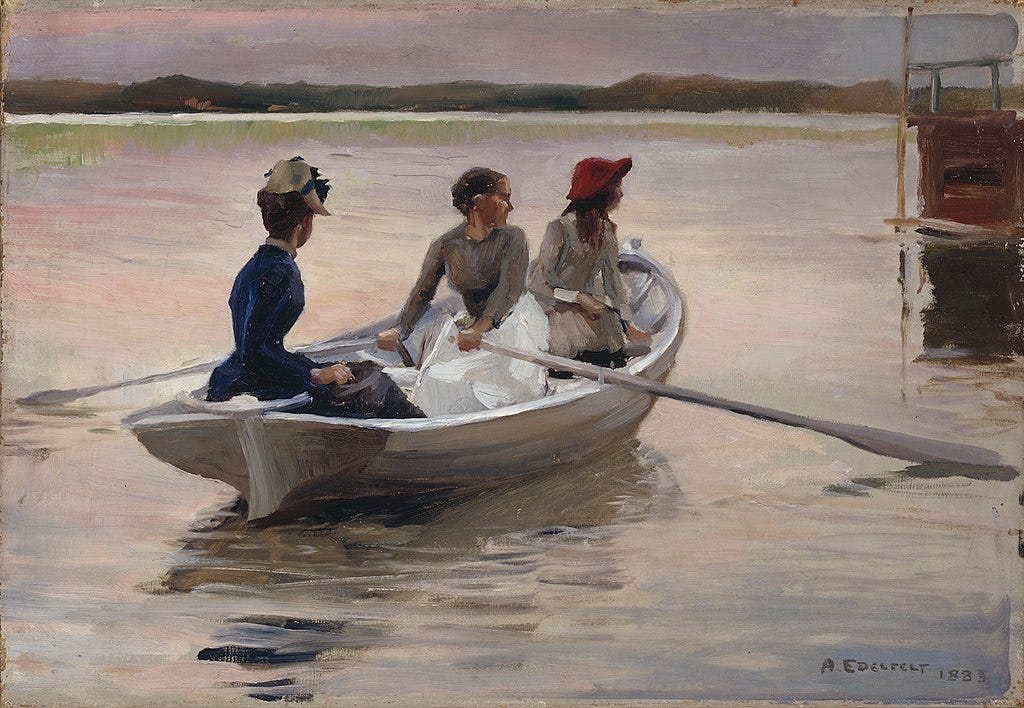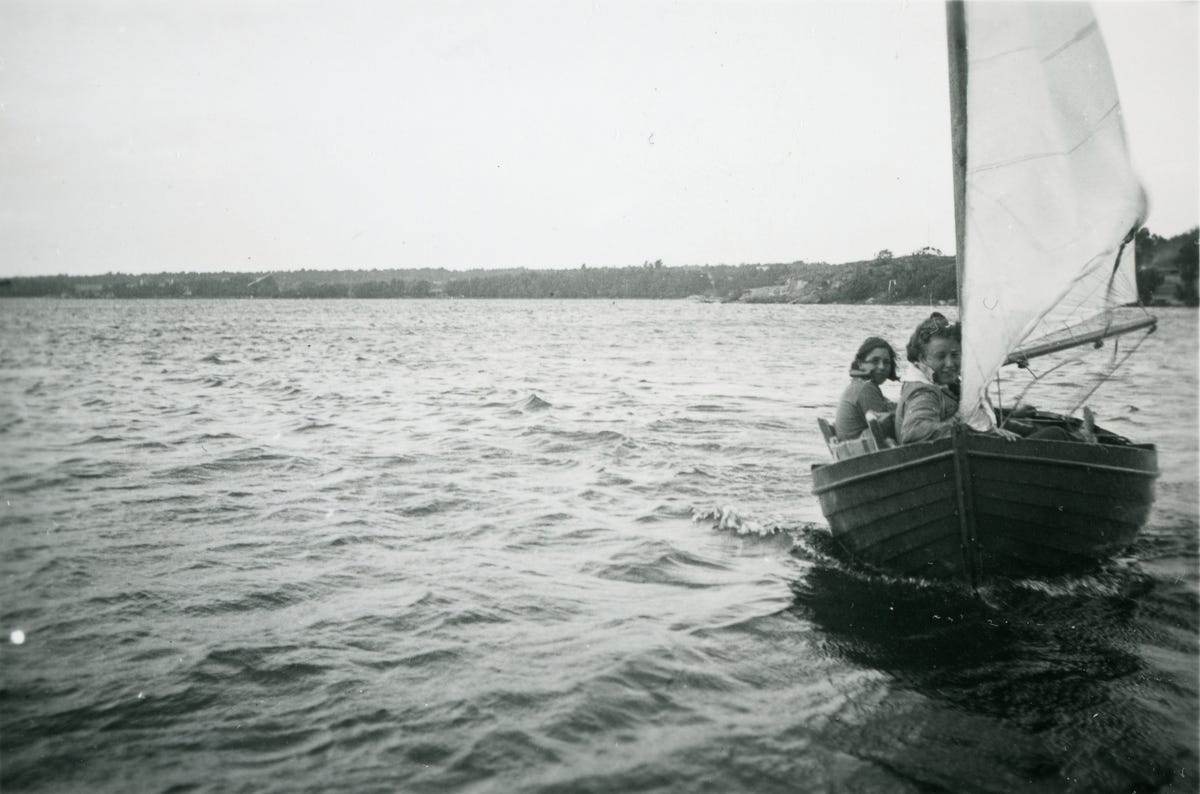#7 Exploring new horizons
Keep up the good resolutions for 2021 and discover something new

Dear readers,
Welcome to 2021! Although this new year seems to drag along many of the worst features of the last one, Dig It! is looking ahead. Like many of you, we are all about good resolutions for the upcoming year, and one of those is learning new things about digital in GLAMs.
Dig It! is as much a space for us to exchange ideas and views as it is dedicated to you, the readers. We are trying to learn and adapt this newsletter according to the feedback we receive and the things we learn. One of the things we’ve heard is that many appreciate the conversational style of Dig It! - and we want to keep it that way. Still, we feel that while we want to provide in-depth conversations, we also want to go on featuring others’ work, things that have inspired us, and much more. In order to keep on delivering the quality we strive towards, we will start publishing Dig It! once a month from now on. We hope you’ll understand and are looking forward to seeing this community grow during the next year, exploring new horizons together!
Let’s get going: In this issue, we will look into the crystal ball and discuss upcoming trends in digital GLAM practice, share some of the areas that we want to dig deeper into and learn more about this year, and showcase some of the resources that might help you to explore new horizons in digital practice in the cultural heritage sector.
1. Let’s talk about… 2021 and the adventures ahead
Medhavi: If 2020 was about distancing, 2021 looks ready to focus on reconnection. As restrictions still limit people’s everyday lives and connections are becoming a scarce resource, GLAMs would do great to use digital formats to engage with their relevant communities in a more personal, intimate way. This would mean a rise in Facebook Groups, Telegram/Slack channels alongside the usual social media practices which target a broad audience. In other words, 2021 will see digital communities that emphasize deeper, more meaningful connections.
Larissa: I totally agree with you on that one. There have been quite a lot of talks and initiatives last year that used the term “community-building” when it came to GLAM’s activities online. I guess many still have to figure out a way to actually take this term seriously - as in cherishing the audiences online as much as those on-site.
During the last weeks and months, I’ve seen a lot of organizations struggling with analyzing data on their digital performance. Although there have been some discussions going on between digital GLAM professionals for a long time now, we still struggle to find the right variables to analyze an institution’s impact online. Furthermore, many tend to neglect qualitative data and focus on the quantitative output of the analytics dashboard of their choice. However, if you want to dig deeper into your statistics, it is crucial to have benchmarks in order to be able to make valid hypotheses about your own performance. Jonas Heide Smith, Head of Digital, published some of the performance data of the National Gallery of Denmark’s online collection recently - I hope to see more institutions opening up like that, in order to be able to make valid statements about online performance by comparing strategies, platforms, and activities (although there are, of course, limitations for these comparisons). So, as something between a wish and an on-going trend, I hope to see more creativity and openness when it comes to assessing an institution’s performance for its target audiences.
Medhavi: The dominance of Big Tech has raised several questions worldwide. On the one hand, GLAMs could work on strategies to limit dependence on these platforms by exploring the possibility of building networks to cross-promote each other’s content and boost their reach. If GLAMs can start to rethink collaboration promotion, it might get them a larger and more diverse audience. On the other hand, the rise of social commerce will offer GLAMs an opportunity to monetize and work around content strategies that increase merchandise or book-sales.
Larissa: Merchandise or book-sales - that reminds of new revenue generation models based on digital channels and media. I think that will be a topic of increasing importance in the new year. Last year, we’ve seen incredible growth in (sometimes quite improvised) online shops of GLAM institutions and I think that we’ll see an increase in organizations that will try to make their digital activities financially sustainable. In order to make that happen, I think there is first of all skills development needed in some areas such as digital tours and audience research: What are people willing to pay for online? I could imagine that crowdfunding and subscription models, comparable with Patreon or similar services, could work well in the GLAM sector if they have invested in a stable and loyal community. And, of course, if they have the staff necessary to produce the necessary flow of content.
Medhavi: 2020, for all that it was, taught us to adapt and poked many GLAMs to rethink investment in digital infrastructure. In 2021, learning & skill development ought to take center stage. Personally, of all the services I offer to GLAMs, “training staff in digital” is so royally ignored that it breaks my heart! So my hope for GLAMs would be to urge and enable employees to take courses or give them time off for skills development. Organizing learning opportunities internally needs to be prioritized, budgeted for, and taken on the agenda for long-term success. Even if an institution relies on external help (agencies, consultants, etc.), staff including senior management needs to be well versed with the digital platforms and technology to be able to state deliverables and assess impact!
Larissa: You’re really on point there, although I would not necessarily differentiate between infrastructure and skills development; without working on the development of the necessary skills and the staff’s digital literacy, technical infrastructure cannot be exhausted in all its possibilities.
I listened to a great talk by Professor Ross Parry at the conference “The Art Museum in the Digital Age”: One of the aspects he talked about was the “One on One” project’s model of an institution’s digital maturity. He said that reconciling digital transformation in its technological changes with the social purpose and roles of museums is the overall goal in digital maturity. Hence, driving digital transformation in a digitally mature institution means nothing else than striving towards fulfilling its purpose in society. (Imagine me clapping here.) Another crucial point in his presentation was about a holistic view on digital, with the different agents in the institution (from processes and visions to leadership and staff) playing different, but important roles in driving digital transformation in their institution. I hope that we get closer to that perception of digital as a tool on the journey to fulfilling an institution’s purpose in 2021.
What are your predictions and hopes for digital in GLAMs in 2021? What do you want to see more of - or less? Share it with #GLAMsDigIt or…
2. The written word
Are you wondering about boosting the reach of your digital collections in 2021? Trilce Navarrete and Elena Villaespesa might be able to help you with persuading your colleagues and leadership. In their open-access article “Digital Heritage Consumption: The Case of the Metropolitan Museum of Art”, they analyze the chances and implications for museums having their artworks used on Wikipedia. The modes of cultural consumption for the traditional art museum visitor and a user of the digital encyclopedia are especially intriguing to us:
“We argue that cultural consumption does not have to take place explicitly within a cultural context, such as a museum or a museum website, but that it can also take place within an information context, as accidental cultural consumption (e.g. in Wikipedia), both as hedonic and utilitarian forms of consumption. We further propose viewing paintings used to illustrate Wikipedia articles as an alternative consumption of museum content. Such consumption [...] points to the information value of collections that serve as visual documents to the encyclopaedic articles. Consumption of museum collections would in turn gain an entire new share of the market to increase the user base, beyond the traditional museum visitor.” Navarrete & Villaespesa, 2020
Find the article here.
3. And now for something completely different!

Medhavi: To be honest, we love a little challenge every now and then, especially when it comes from GLAMs! Learning new skills anywhere and at any time could be a step towards expanding our horizons. This 52-week photography challenge could inspire you to try a new technique each week of the year - or challenge your audience to do so?


Since March 2020, the Royal Academy has hosted a daily challenge with #RADailyDoodle on Twitter to keep people sane during the lockdown (that kept on going…), The Cooper Gallery has continued with jigsaws every day, and India’s JNAF Gallery hosts a new challenge each month!
Speaking of challenges, have you considered participating in the ongoing #1Lib1Ref campaign? Twice a year, this challenge calls on librarians around the world and anyone who has a passion for free knowledge to add missing references to articles on Wikipedia.
Get this GIF
Larissa: And if you wonder why you should take part in challenges like these - I really appreciated this article by Margaret Talbot for The New Yorker:
“an endorsement of learning for learning’s sake—not for remuneration or career advancement but merely because it delights the mind—what’s not to love?”
4. Start digging
Larissa: One of the topics that I really want to dig deeper into in 2021 is metadata management. In my research, I stumbled upon the Getty Research Institute’s “Introduction to Metadata” by Murtha Baca. I find it comparably easy to read and understand for people like me with a non-tech background.
“Digitization does not equal access. The mere act of creating digital copies of collection materials does not make those materials findable, understandable, or utilizable to our ever-expanding audience of online users. But digitization combined with the creation of carefully crafted metadata can significantly enhance end-user access—and our users are the primary reason we create digital resources.” Murtha Baca, 2016
If you have other recommendations, get in touch or share them with #GLAMsDigIt!
5. Upcoming
🗓 20 January: The Research Libraries UK’s “Digital Shift Forum” is joined by John Stack, the Digital Director of the Science Museum Group for a webinar. His talk will focus on “Managing digital in a time of accelerating change”. You can register for free here.
🗓 27 January: “Party like only PID-lovers can”: That sounds promising. If you’re also a fan of persistent identifiers and open research infrastructure, register for the 24-hour party that is PIDapalooza, co-organized by the Digital Library of California, CrossRef and others. Find out more here.
🗓 28 January: For the Europeana Café series, Marijke Everts is organizing an online event with a focus on Diversity and Inclusion. She’ll discuss these topics with Femi Bankole (co-founder of the social media platform Black and Irish), Sarah Soha (founder of HowIcan), and Daniel Blackie (disability historian).
🗓 4 February: This is for the data interoperability crowd in this community. FAIRsFAIR is presenting the findings of their recent report on “FAIR requirements for persistence and interoperability” in a webinar. More information available here.
🗓 Until 11 February: Is your institution hosting Art+Feminism (A+F) this year? You can apply for Rapid Grants from now until 11 February. You can also apply for funding through the A+F micro-funding process ($250). Here’s a quick guide to funding for A+F events.
Thanks for your attention! If you liked this issue, consider sharing it with others…
or subscribe to this newsletter to receive monthly updates in your inbox!
Stay safe!
Edit, 20 Januar 2021:
After publishing this issue, it has been brought to our attention that the former header image had a problematic historical context. We have therefore decided to change the image. We apologize to the people who might have been offended because of the use of this image.





Thank you for the wonderful 'One by One' shout-out! As one of the researchers associated with this project, we are hoping 2021 has an even greater focus on digital skills development - beyond technical competencies. Our research shows we need to fuse business intelligence skills with emotional skills to achieve digital maturity. One of the reasons there is a struggle to achieve deeper digital engagement is because we have not formally taught or practiced how to be human on digital channels. This is a skill that must be taught and actively practiced. This emotional skill building is also required for the development of the development of implicit/explicit practices and policies (scaffolding) required to create a safe online space for engagement. This is ESPECIALLY needed if organizations are using Big Social platforms where toxicity is rampant. If you and your readers would like to learn more about 'One by One' and how we are building a Periodic Table of Skills, we invite you into our research community, the Digital Commons - https://bit.ly/DCinvitation.
It shall be mentioned that the cruise ship above is the Reliance on a trip around the world under Nazi-German flag in 1938. The photographer is Franz Grasser. 44 photos from this journey can be viewed here: https://mprove.de/chronolab/world/hapag/grasser.html?q=Reliance